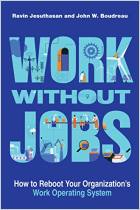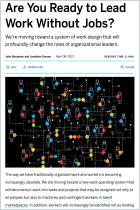Únase a getAbstract para acceder al resumen.

Únase a getAbstract para acceder al resumen.
John W. Boudreau, Ravin Jesuthasan and David Creelman
Lead the Work
Navigating a World Beyond Employment
Wiley, 2015
¿De qué se trata?
Organizations can tap into a world of freelance talent beyond full-time employment.
Recommendation
New work arrangements are transforming how organizations do business and threatening the model of fulltime employment. Leaders must focus on the work their company needs done and how to distribute it. An array of available international talent allows firms to assign work through global relationships with freelancers and suppliers at different levels of permanence, skill and flexibility. The world beyond employment can provide free agents with satisfying work and allows firms to grow and shrink as needed. Professor John W. Boudreau and consultants Ravin Jesuthasan and David Creelman explain why and how companies should be “leading work – not managing employees.” They combine their international expertise in HR management to help leaders navigate changes in work allocation. Their descriptions of models outside fulltime employment underline the best practices for each set up, including freelancers, offshore suppliers, and more. The authors suggest modular frameworks to suit particular kinds of businesses. Case studies illuminate the possibilities. Overall, the direct text is designed for use as a recurring reference. The book’s length encourages selective reading; the extensive index helps. getAbstract recommends this comprehensive manual to HR professionals, executives, and those in governance roles who see the tide turning and need to swim.
Summary
About the Authors
The author of 10 books, John W. Boudreau, PhD, teaches at the University of Southern California’s Marshall School of Business and Center for Effective Organizations. Ravin Jesuthasan is a managing director at Towers Watson’s talent management practice. David Creelman is CEO of Creelman Research, an HR consultancy.






















Comment on this summary